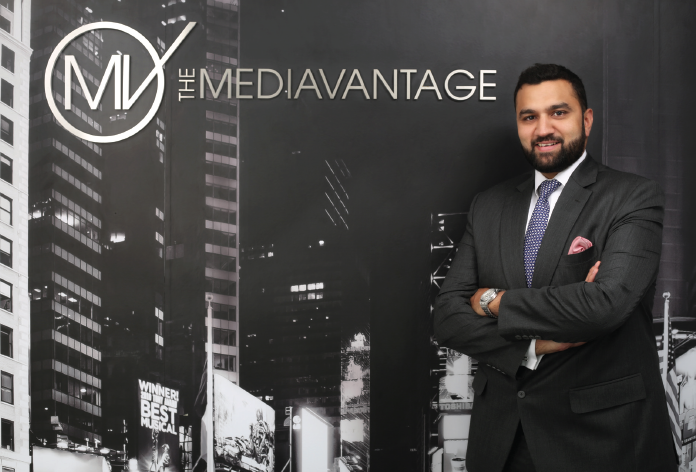To grow business in the region, says Manoj Khimji, marketers would do well to look outside the region

Any guesses at the most common phrase heard inside media agencies in the Middle East this year? Yes, that’s right: “It’s a really tough year, clients aren’t spending, nothing’s getting signed off. Man, it’s all about the oil price, and there’s a recession coming, etc etc, etc.”
Some of this is certainly affecting a few people, but what surprises me in this whole equation is that isn’t it part of the role of a media agency to come up with more efficient and effective strategies when its clients need it most? Sure it’s great when every client brief results in a $3m media budget and every media plan gets signed off. But what about when the people you were previously spending $3m to reach are no longer buying your client’s products? What happens when your working day is spent listening to and reciting the phrase above to suppliers, colleagues and anyone else who may be suffering?
Perhaps the answer lies in helping your clients look for different consumers. Perhaps we need to look at the 96.95 per cent of the world’s population who don’t currently reside in the Middle East. Perhaps we should tap into the other 7bn people in the world to buy our real estate, fill our hotel rooms and sit in our aircrafts. Perhaps we need to feed our clients a bigger pie.
Whilst the international ad budgets of a sparse few clients has increased in 2016, the bulk of clients have receded their budgets, scared of what lies beyond. The gross domestic product (i.e. the total value of all goods and services manufactured and produced) actually increased by 3.4 per cent globally in the past 12 months. In the Middle East, paradoxically, it decreased by 7.1 per cent, amounting to an almost 11 per cent swing in financial performance compared with the rest of the world.
The economists among us will be familiar with the law of diminishing marginal utility, whereby the more we use or consume a product, the less the benefit and the enjoyment becomes, and its utility to us as a consumer ultimately diminishes. Take, for example, a friend we will call Sara. Sara’s mighty hungry and decides to buy five slices of pizza to satisfy her appetite. The first slice is divine and she gains a massive amount of positive utility and high benefit from consuming it. The second slice sees her appetite pretty much satisfied, and the third and fourth slice almost become a chore to scoff down. Sara doesn’t even eat her fifth slice, as the utility and need have decreased completely.
We can teach the same lessons to advertisers here, who have been so predisposed with fighting over the 9 million UAE consumers, that the utility (media, in this case) has diminished for both the client and the consumer – more so during tougher domestic times.
The obsession over volume rebates, fighting for 2 per cent extra discounts and zero agency fees means many agencies and clients are missing the bigger picture. The UAE today is one of the most sought-after markets in the world. If we let that sink in for a moment, we realise that there are literally billions of ready consumers around the world, waiting to be communicated to from brands in the Middle East.
In 2015, there were 5.7 visitors for every resident in the UAE – roughly translating to the inbound market being six times the size of the domestic market for advertisers. “What about corporate customers?” I hear you ask. In the 12 months from June 2015 to 2016, Dubai and Abu Dhabi overtook every single American city in terms of popularity for long-haul meetings, incentives, conferencing and exhibition groups. Las Vegas, long the home of the industry convention with its allure of casinos and debauchery, is now playing third fiddle to corporates wanting to bring their valued staff and key clients to the mighty UAE with its tall, shiny buildings and record-breaking theme parks. Who would have thought?
The numbers and stats are one thing, but what about the quality of the media? The media opportunities in the rest of the world are significantly more developed and innovative than the ones local media owners are able to produce. Take, for example, the Museum of Feelings activation in New York, the 360-degree interactive campaign at Waterloo Station, or the spying billboard for the movie Snowden in Toronto and the ability of media such as The Times UK or the Hindustan Times in India to seamlessly integrate print with mobile and digital. With a plethora of high-quality platforms and genuine investment into innovative content delivery, why shouldn’t Middle East brands be seeking to eat from a bigger pie (and one where the utility has not yet diminished)?
Staying on the theme of debauchery, as Bill Clinton once said, “The price of doing the same old thing is far higher than the price of change.”
Manoj Khimji – Managing director of The MediaVantage










